Содержание
- 2. The problem We tend to think about language as a system of discrete elements (phonemes, morphemes,
- 3. Simple example: morpheme fusion детский det-sk-ij ‘children’s, childish’ Root-Suffix-Ending [deckij] suffix deck-ij root
- 4. Similar exampes abound on all lingustic levels Phonemes: coarticulation cat keep cool Words: clitics iz mašiny
- 5. Paradigmatics The same problem applies to paradigmatic boundaries, that is boundaries between classes, types, or categories
- 6. Semantics X said smth (Zaliznjak 2006: 186) ‘X uttered a sequence of sounds’ ‘X meant smth’
- 7. Diachronic change Russian писать pisat’ ‘write’ Funny slangish use: popisal nozhom ‘cut/slashed someone with a knife’,
- 8. Language contact The Baltic language Prussian, spoken in this area until the 16th – 17th century
- 9. Intermediate conclusion Language simultaneously longs for discrete, segmented structure tries to avoid it Non-discrete effects permeate
- 10. Possible reactions “Digital” linguistics (de Saussure, Bloomfield, Chomsky...): More inclusive (“analog”) linguistics: often a mere statement
- 11. Cognitive science Rosch: prototype theory Lakoff: radial categories A is the prototypical phoneme/word/clause/ meaning... B, C,
- 12. My main suggestion In the case of language we see the structure that combines the properties
- 13. Various kinds of structures ▐ focal point 1 focal point 2 discrete structure ▐ continuous structure
- 14. Still more realistic: amoeba structure
- 15. Examples ▐ focal point 1 focal point 2 det sk said told *pis- pis- Prussian German
- 16. Peripheral status of non-discrete phenomena Where does it stem from? Objective properties of language? I don’t
- 17. Kant’s puzzle The role of observer, or cognizer, crucially affects the knowledge of the world “The
- 18. Recapitulation: A paradoxical state of affairs Science is based on categorization (Aristotelian, “rationality”, “left-hemispheric”, etc.) The
- 19. What to do? We need to develop a more embracing linguistics and cognitive science that address
- 20. 1. Start with prosody Prosody is the aspect of sound code that is obviously non-discrete Example:
- 21. 2. Explore gesticulation In addition to sound code, there is a visual code: gesticulation and generally
- 22. 3. Employ mathematics appropriate for the “cognitive matter” Methodological point 1960s: a fashion of “mathematical methods”
- 23. Conclusion Just as we invoke scientific thinking, we tend to immediately turn to discrete analysis This
- 25. Скачать презентацию

![Simple example: morpheme fusion детский det-sk-ij ‘children’s, childish’ Root-Suffix-Ending [deckij] suffix deck-ij root](/_ipx/f_webp&q_80&fit_contain&s_1440x1080/imagesDir/jpg/338830/slide-2.jpg)

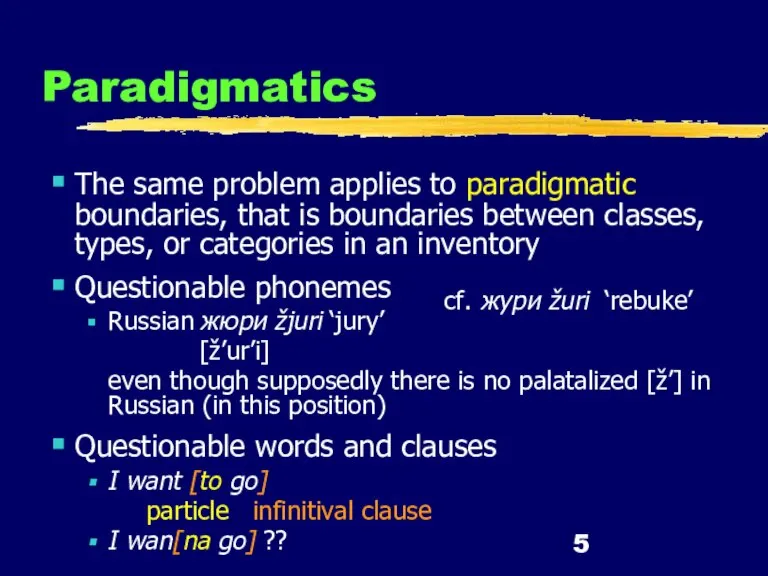
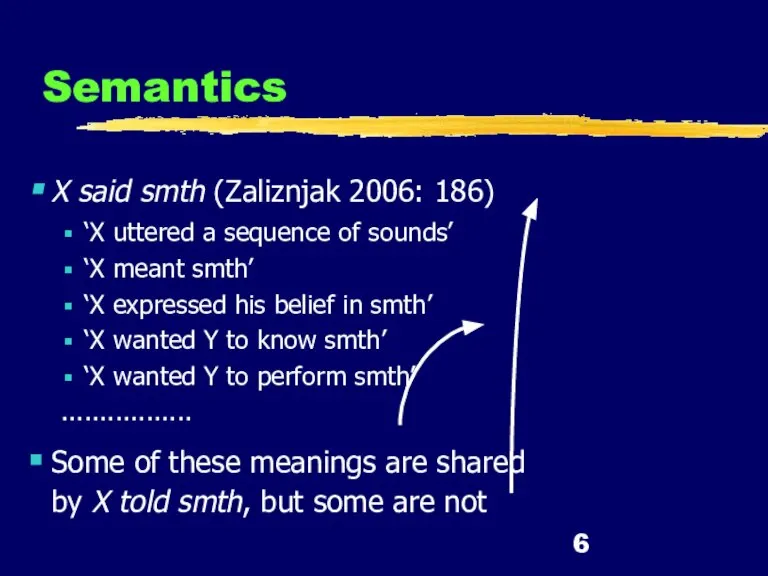
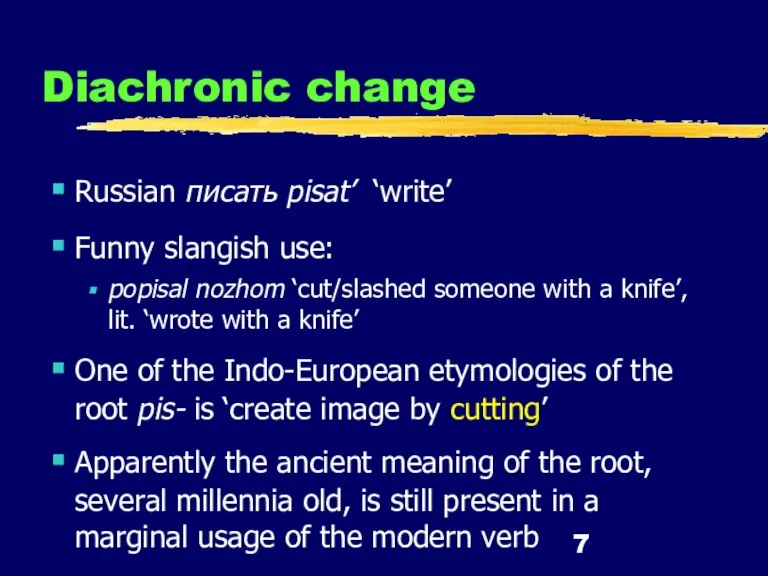
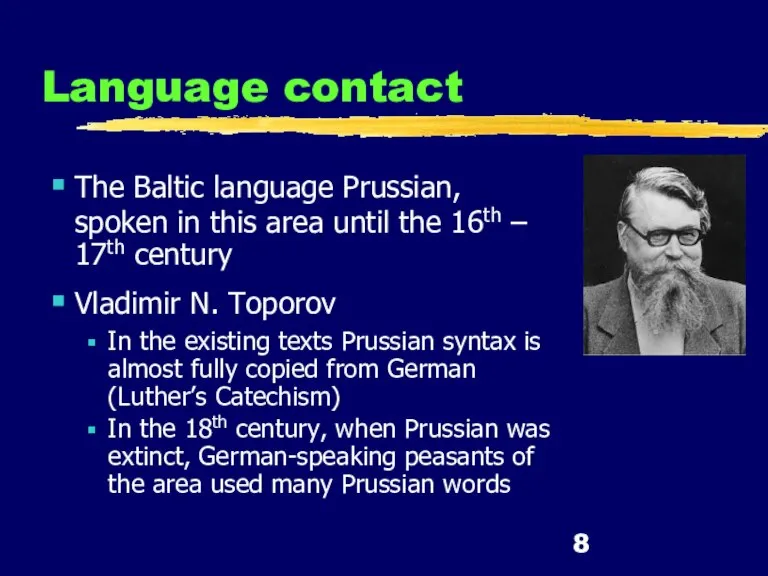
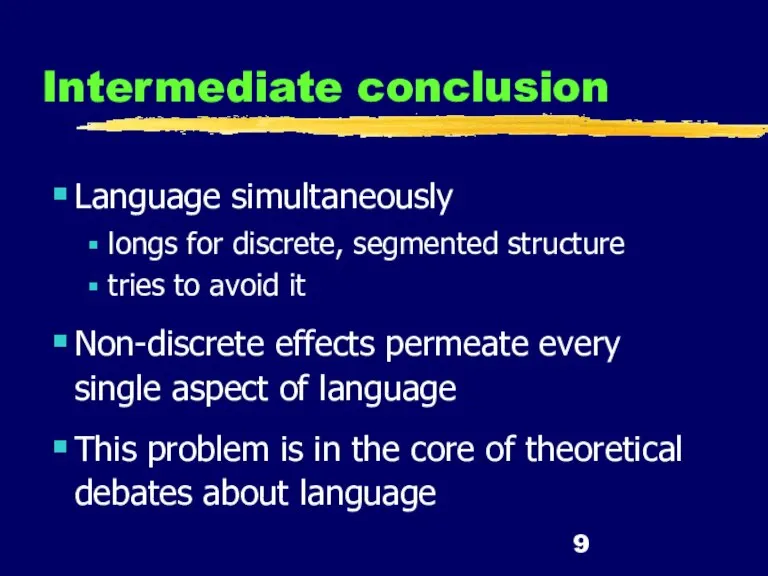
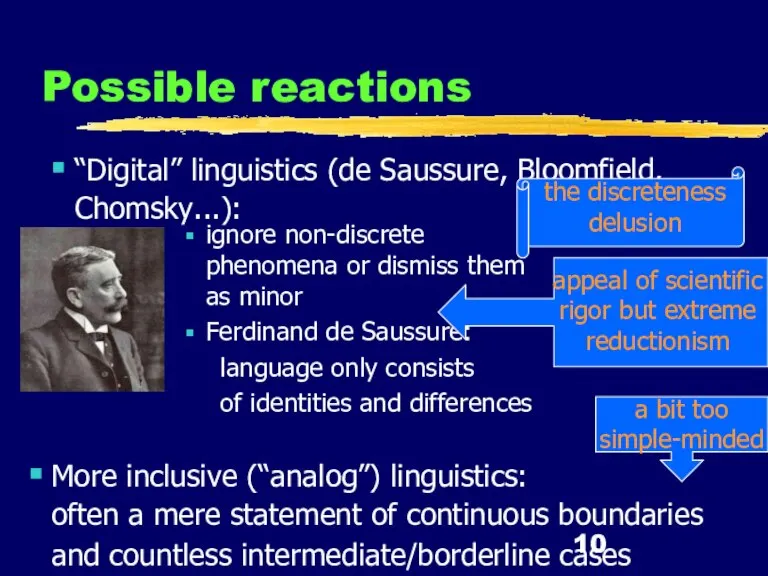

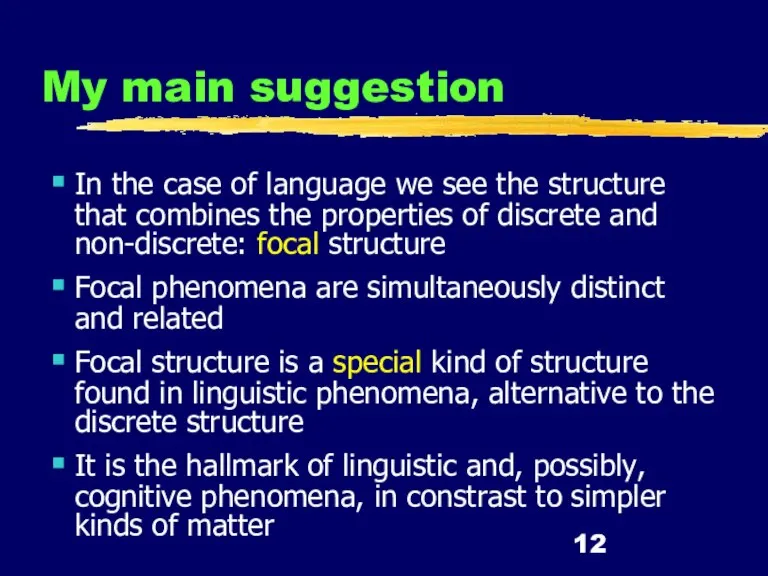




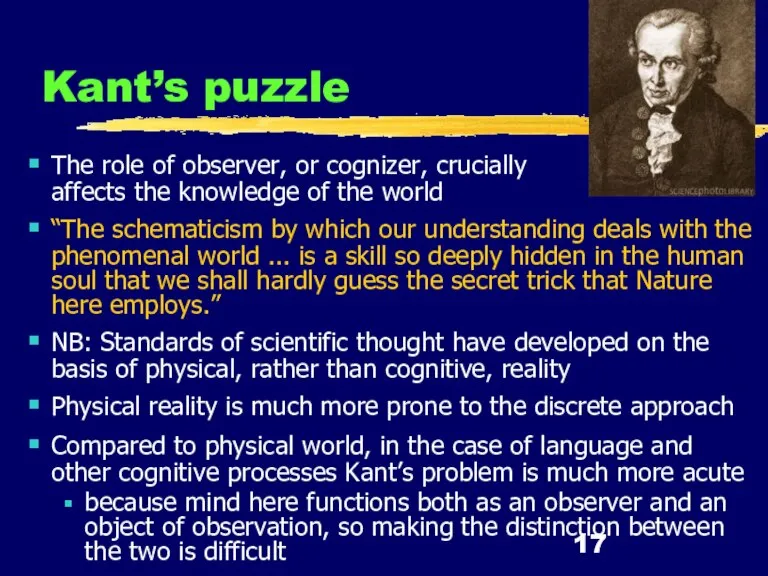
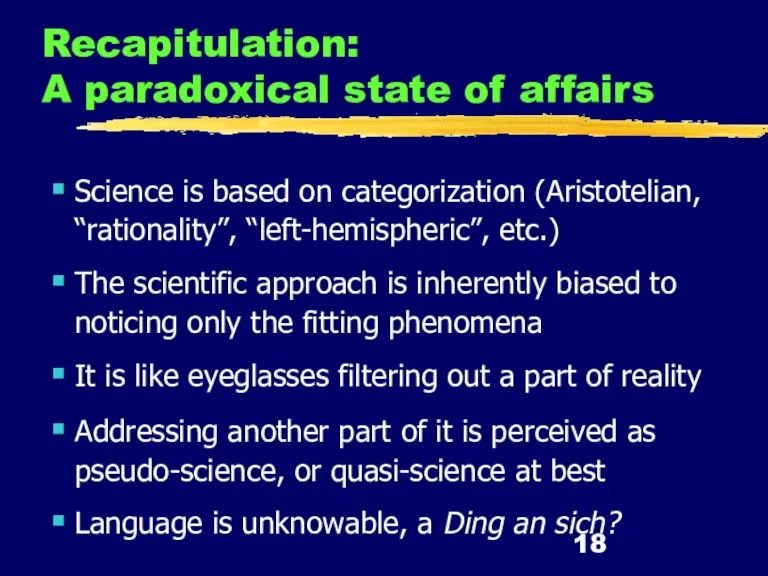
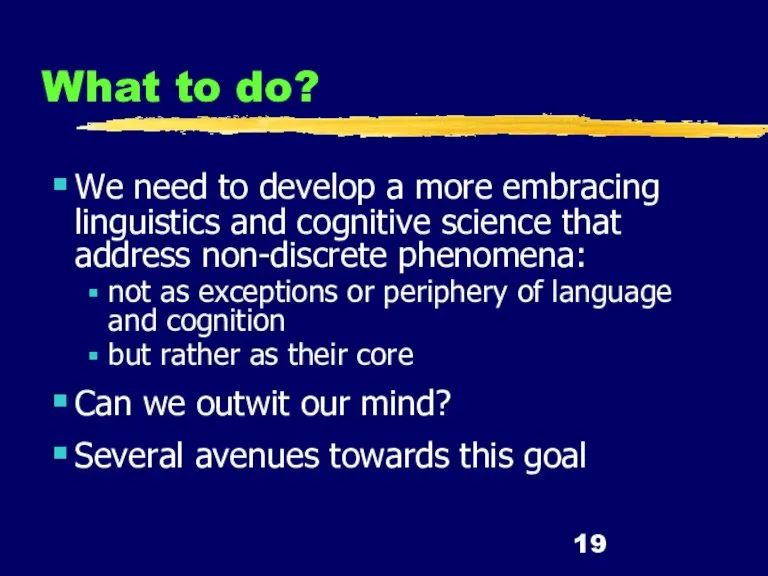
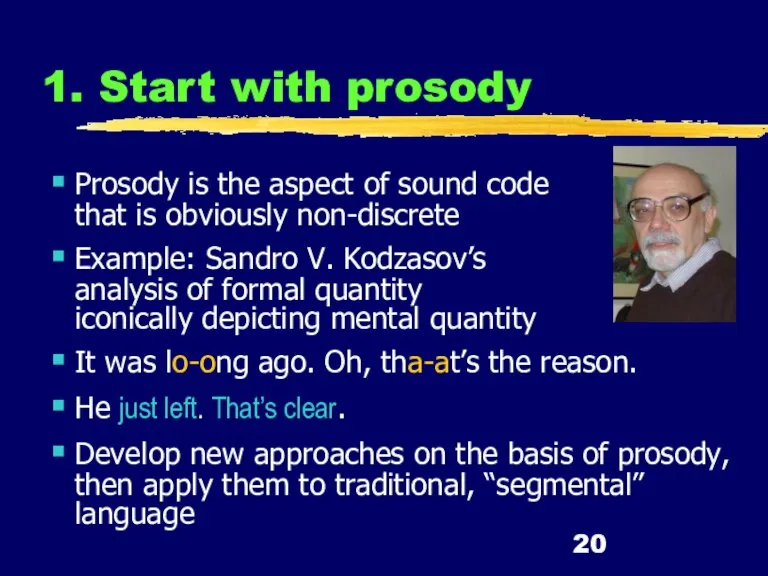
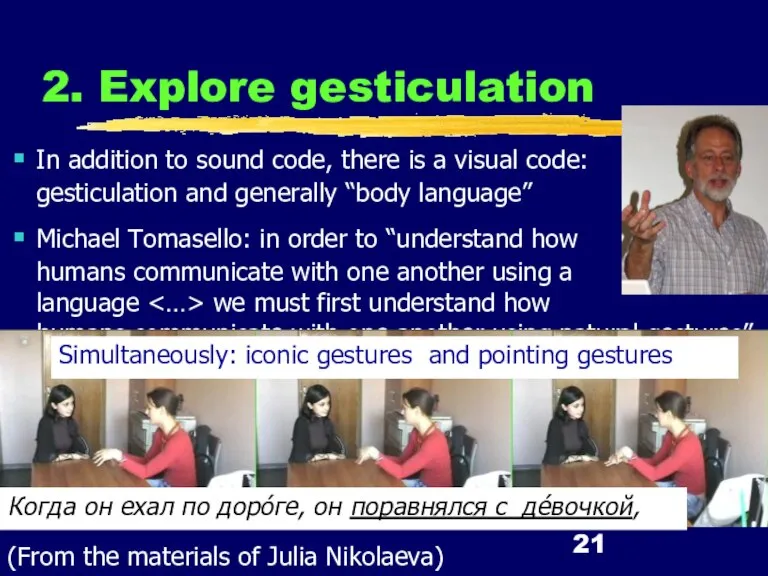
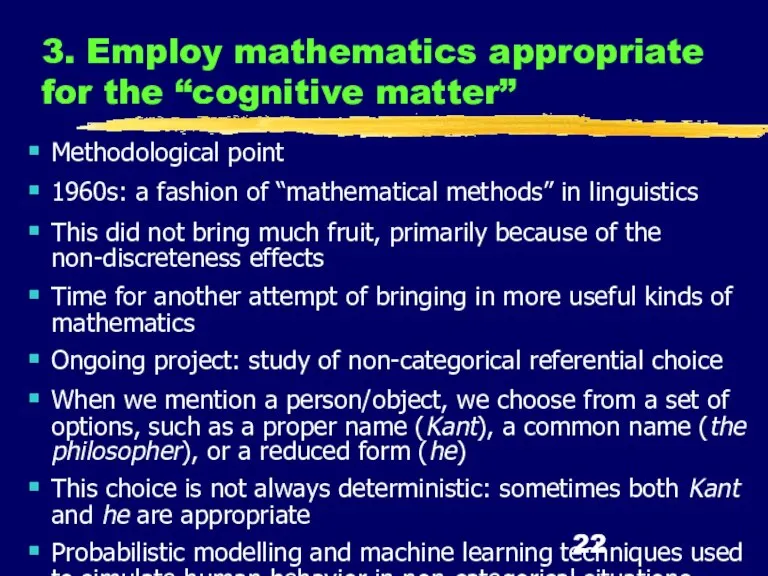
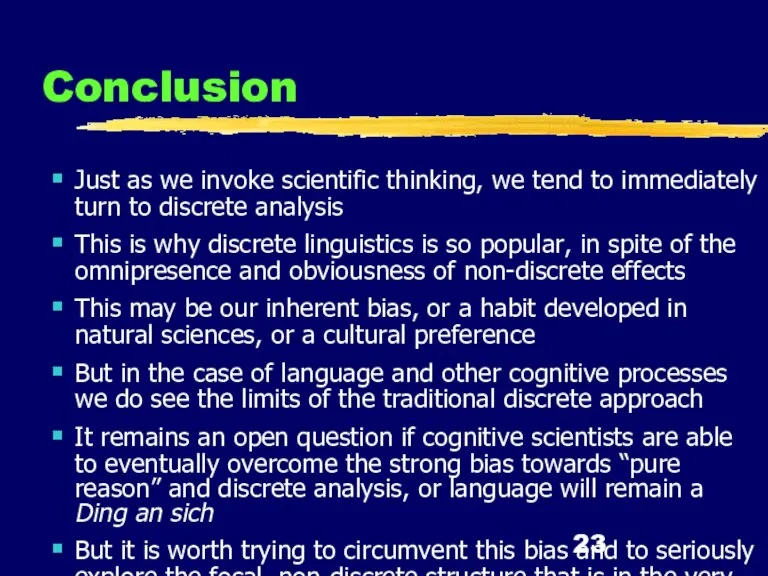
 Порядок подписания и утверждения документов
Порядок подписания и утверждения документов Сокращение затрат на телефонное обслуживание клиентов
Сокращение затрат на телефонное обслуживание клиентов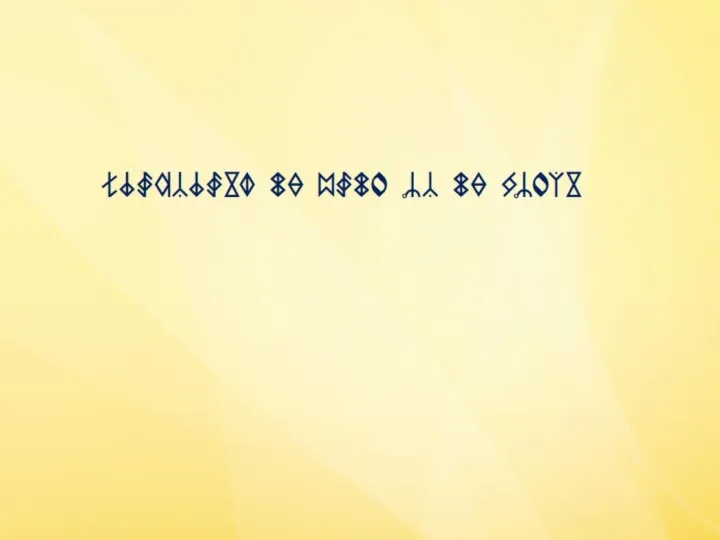 После занятия
После занятия Презентация на тему Внешнеторговая политика России
Презентация на тему Внешнеторговая политика России  Дополнительный_материал_11.12_28.01.2022_c054ef00
Дополнительный_материал_11.12_28.01.2022_c054ef00 ОРЛ-А
ОРЛ-А ОАО «Читинская энергосбытовая компания»
ОАО «Читинская энергосбытовая компания» #Россия наш общий дом
#Россия наш общий дом Оценка правильных ответов. Тестирование
Оценка правильных ответов. Тестирование Организация работы с детьми с ограниченными возможностями здоровья в Муниципальном образовании Лабинский район
Организация работы с детьми с ограниченными возможностями здоровья в Муниципальном образовании Лабинский район Презентация на тему Функциональные стили речи.
Презентация на тему Функциональные стили речи. Описание модели. Вид изделия: пальто
Описание модели. Вид изделия: пальто Береги глаза как зеницу ока
Береги глаза как зеницу ока Презентация на тему: Пожаробезопасность
Презентация на тему: Пожаробезопасность Лимрики – поэтические произведения
Лимрики – поэтические произведения Островский
Островский Щенки мальтийской болонки (мальтезе)
Щенки мальтийской болонки (мальтезе) Семья
Семья Влияние на организм химически опасных веществ.
Влияние на организм химически опасных веществ. Разработка eSIM
Разработка eSIM РЕПУТАЦИЯ И КОРПОРАТИВНЫЙ БРЕНД:
РЕПУТАЦИЯ И КОРПОРАТИВНЫЙ БРЕНД: Группа п15.1
Группа п15.1 Профориентация в русле ФГОС нового поколения
Профориентация в русле ФГОС нового поколения Государственная итоговая аттестация ЕГЭ 2021
Государственная итоговая аттестация ЕГЭ 2021 Художник по костюмам Стромова Изабелла
Художник по костюмам Стромова Изабелла Кроссворд
Кроссворд Тыва улустун эдилелдери. Викторина
Тыва улустун эдилелдери. Викторина Проект Домашний сторож. Сигнализация
Проект Домашний сторож. Сигнализация